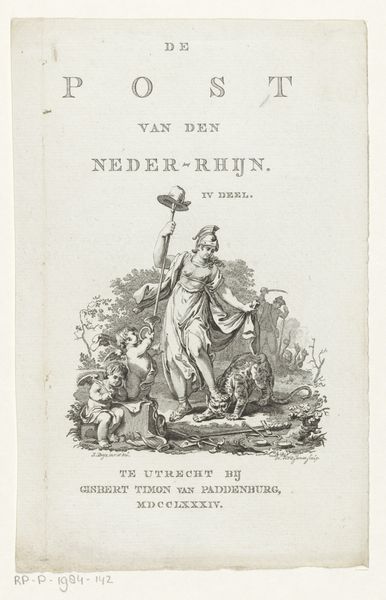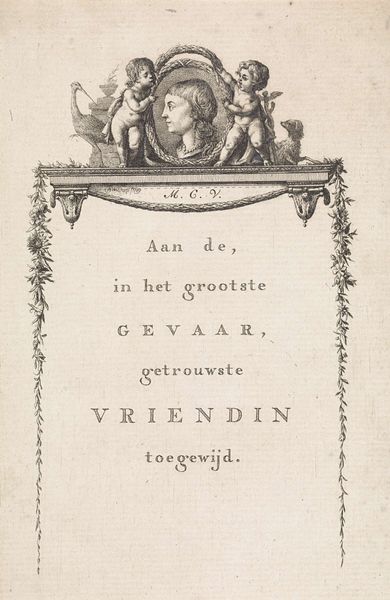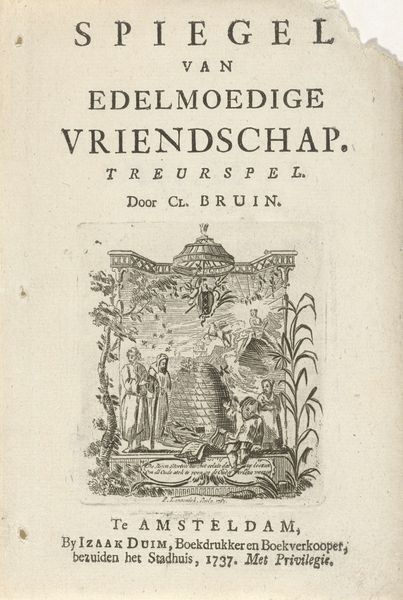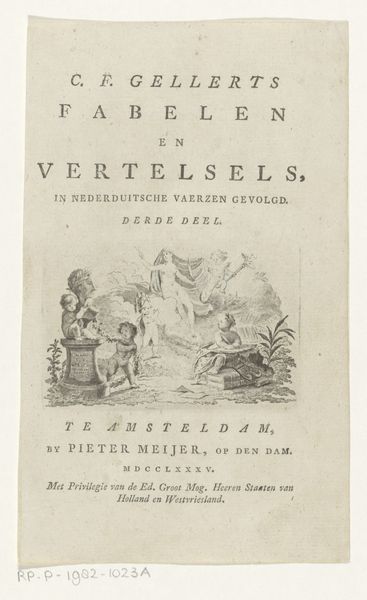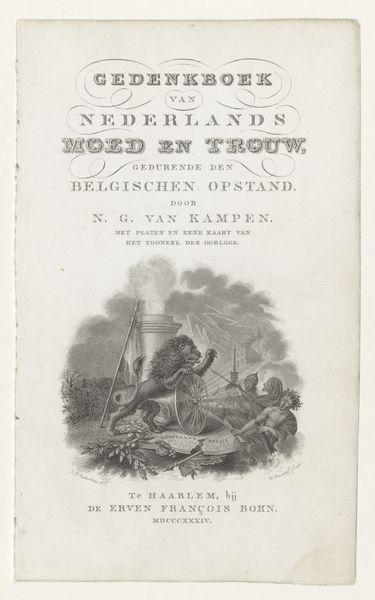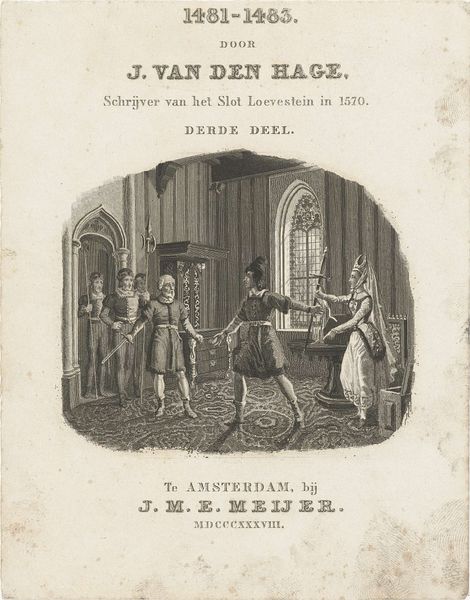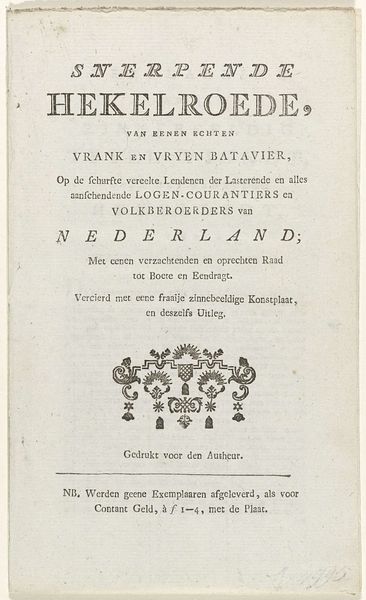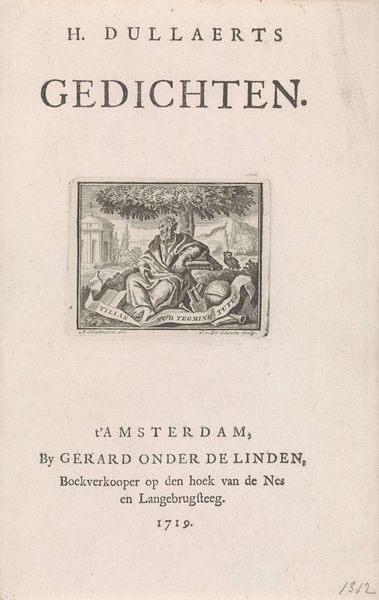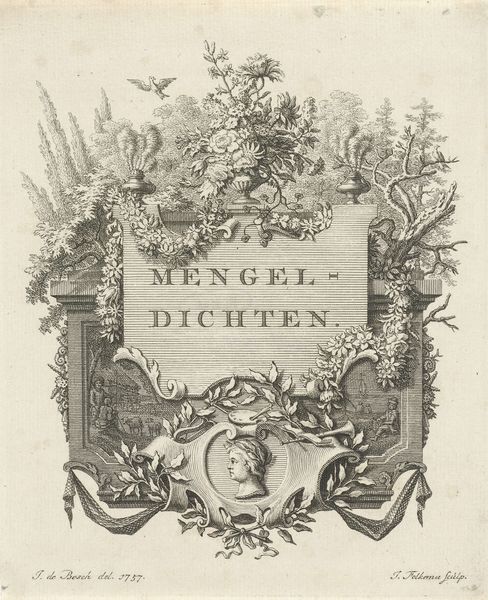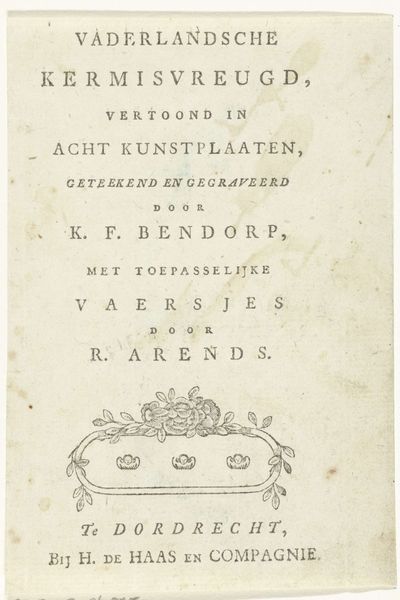
Allegorische voorstelling met Vrijheid en een driekoppige slang 1783
0:00
0:00
izaakjanszdewit
Rijksmuseum
print, engraving
#
neoclacissism
#
allegory
# print
#
old engraving style
#
engraving
Dimensions: height 218 mm, width 149 mm
Copyright: Rijks Museum: Open Domain
Curator: This delicate engraving, now residing in the Rijksmuseum, is entitled "Allegorical Representation with Freedom and a Three-Headed Serpent," dating back to 1783. Izaak Jansz. de Wit created this fascinating allegorical scene. What strikes you initially about it? Editor: Well, it’s immediately evocative of revolution, but with this peculiar mix of hope and suppressed violence lurking beneath. The delicate line work almost belies the chaotic energy I sense. Curator: It certainly captures a complex moment in history. As an allegory, we can delve into its symbolism. Note the figure of Freedom, classically draped, holding the staff topped with the "Freedom Hat" - a symbol echoing revolutionary ideals. And at her feet, children destroy tools symbolizing repression. It’s a direct visual statement about overturning established power structures. Editor: I agree. The discarded tools represent the dismantling of oppressive systems, but who benefits? What about the class relations involved? What specific socio-economic power does that multi-headed snake actually represent, and what are the gender implications in portraying Freedom as a female figure here? Curator: Those are essential questions to consider. This work undoubtedly reflects Neoclassical aesthetics, but it also mirrors the burgeoning socio-political tensions of the late 18th century. Editor: Indeed. Placing it within the context of growing calls for emancipation and the rise of Republican ideals in the Netherlands gives these seemingly innocuous symbols a real edge. Curator: I agree. De Wit clearly harnesses imagery intended to galvanize support. Examining this print allows us insight into the political messaging prevalent during that transformative era. Editor: Thinking about who this print was actually intended for--how widely it was disseminated and its accessibility – becomes really relevant for unpacking this political message and how it impacted people. Curator: A vital point. This print not only reveals its creator’s vision of a liberated society but acts as a touchstone for comprehending how artists shaped—and continue to shape—collective consciousness. Editor: Right, because visual representations continue to play an important role today in shaping our understandings of both revolution and of oppression, and how these are perceived by the people.
Comments
No comments
Be the first to comment and join the conversation on the ultimate creative platform.
